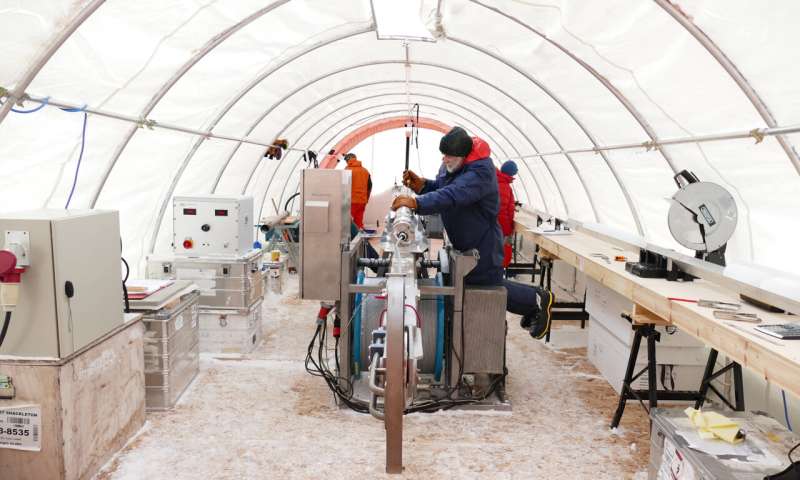
Researchers from the University of Cambridge and the British Antarctic Survey have uncovered the first direct evidence that the West Antarctic Ice Sheet shrunk suddenly and dramatically at the end of the Last Ice Age, around eight thousand years ago.
The evidence contained within an ice core shows that in one location, the ice sheet thinned by 450 meters in just under 200 years.
Scientists are worried that today’s rising temperatures might destabilize parts of the West Antarctic Ice Sheet in the future, potentially passing a tipping point and inducing a runaway collapse. The new study, published in Nature Geoscience, sheds light on how quickly Antarctic ice could melt if temperatures continue to soar.
The Antarctic ice sheets, from west to east, contain enough freshwater to raise global sea levels by around 57 meters. The West Antarctic Ice Sheet is considered particularly vulnerable because much of it sits on bedrock that lies below sea level.
At the peak of the Last Ice Age 20,000 years ago, Antarctic ice covered a larger area than today. As our planet thawed and temperatures slowly climbed, the West Antarctic Ice Sheet contracted to more or less its current extent.
Although the West Antarctic Ice Sheet retreated quickly 8,000 years ago, it stabilized when it reached roughly its current extent.
“Once the ice thinned, it shrunk really fast,” said Wolff, “this was clearly a tipping point—a runaway process.”
“It’s now crucial to find out whether extra warmth could destabilize the ice and cause it to start retreating again.”